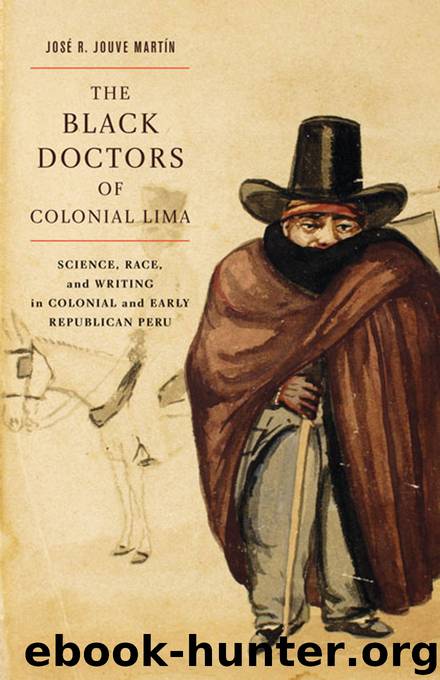The Black Doctors of Colonial Lima by José R. Jouve Martín

Author:José R. Jouve Martín
Language: eng
Format: epub
Publisher: McGill-Queen’s University Press
Published: 2014-03-18T16:00:00+00:00
Tafur, Valdés, and the Panchymagogue
The Matraya affair began in 1825 when news reached the Protomédicato general de la República that a Franciscan priest named Juan Joseph Matraya y Ricci claimed to have the key to cure all sorts of maladies. As noted above, the priest’s revolutionary method was based on the theories of the French surgeon Louis Leroy, whose work La médecine naturelle et curative, ou La purgation dirigée contre la cause des maladies [Curative medicine, or, purgation, directed against the cause of diseases] had appeared in Paris in 1817. Leroy’s book soon became very popular in both Europe and America. A Spanish translation with the title La medicina curativa, ó, La purgacion dirigida contra la causa de las enfermedades appeared in 1820 in Valencia (Imprenta de Ildefonso Mompie), in 1824 in Buenos Aires (Imprenta de Hallet), in 1833 in Mexico (Imprenta de Galván), and it was still in print in Lima as late as 1852 (Imprenta de los Sres. Calleja, Ojea y Compañía). Leroy’s medical ideas were in turn based on the experiences of his father-in-law, a health officer named Jean Pelgas (1732–1804). Their system, aptly named purgative and vomi-purgative, rested on a medical conception similar to that of popular humoralism – namely, that the body contained in itself the germ of its own destruction, which needed to be expunged if it was to remain healthy (Ramsey 1992, 118–19). In order to achieve this goal, they administered two remedies of their own invention (manufactured in Paris by the pharmacist Cottin, who happened to be Leroy’s son-in-law). These preparations “were the best known and probably the most destructive pharmaceutical specialties of early-nineteenth-century France . . . The purgative, available in several ‘degrees’ (strengths), was described as a tincture of scammony, turpeth root, and jalap root; the vomi-purgative contained senna extract, tartar emetic, and white wine” (Ramsey 1994, 42).
Others had tried to introduce universal remedies to Lima and other parts of the Spanish empire before (Lanning 1985, 362–6), but the case of Leroy’s universal medicine, or panquimagogo as it was called in Spanish, was different on several counts. First, “such aggressive therapies won wide acceptance because they demonstrably worked in the sense of producing visible results (purges really purged), and because their actions made sense within a shared system of explanation” (Ramsey 1994, 42). Moreover, they came imbued with the prestige of European and particularly French science. It was supported by the work of doctors and surgeons who claimed to have found a new scientific paradigm far superior to all the competing medical theories of the time. In this regard, Leroy “always distinguished between his own curative medicine and official medicine, which was merely palliative” (ibid., 43). Finally, the very diffusion of Leroy’s book and many others that were based on it gave his system an aura of learning, respectability, and acceptance that distinguished him from the remedies sold in the streets by folk healers and quacks. His book was sold at a very low price by mail order, and this, too, helped Leroy to gain a wide audience.
Download
This site does not store any files on its server. We only index and link to content provided by other sites. Please contact the content providers to delete copyright contents if any and email us, we'll remove relevant links or contents immediately.
| Africa | Americas |
| Arctic & Antarctica | Asia |
| Australia & Oceania | Europe |
| Middle East | Russia |
| United States | World |
| Ancient Civilizations | Military |
| Historical Study & Educational Resources |
The Conquest of the Incas by John Hemming(602)
History of the Inca Empire by Bernabe Cobo(431)
Unjust Conditions: Women's Work and the Hidden Cost of Cash Transfer Programs by Tara Patricia Cookson(361)
The Black Doctors of Colonial Lima by José R. Jouve Martín(349)
Neoliberal Reform in Machu Picchu by Pellegrino A. Luciano(310)
